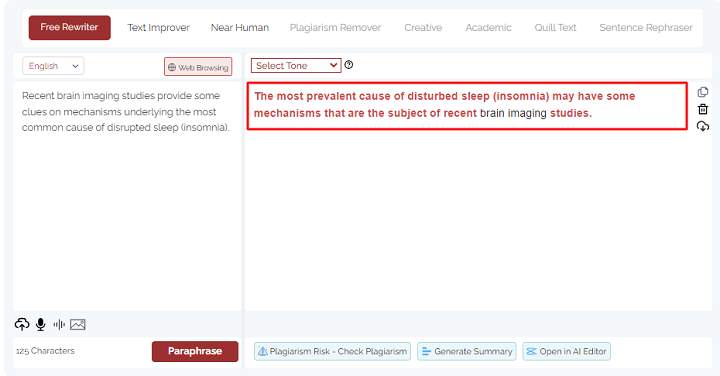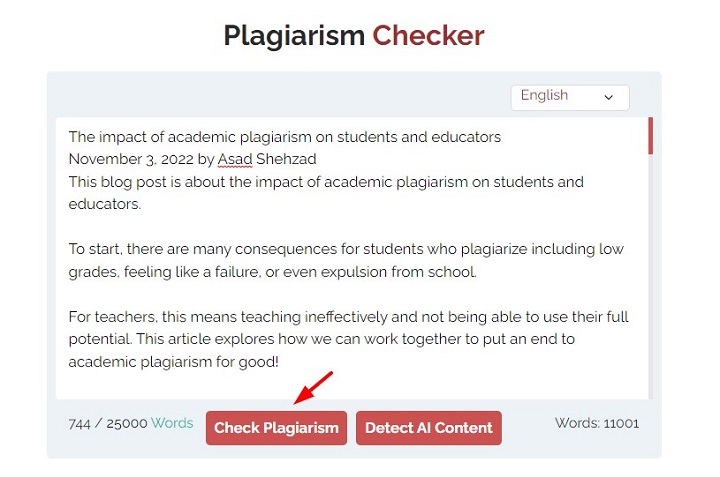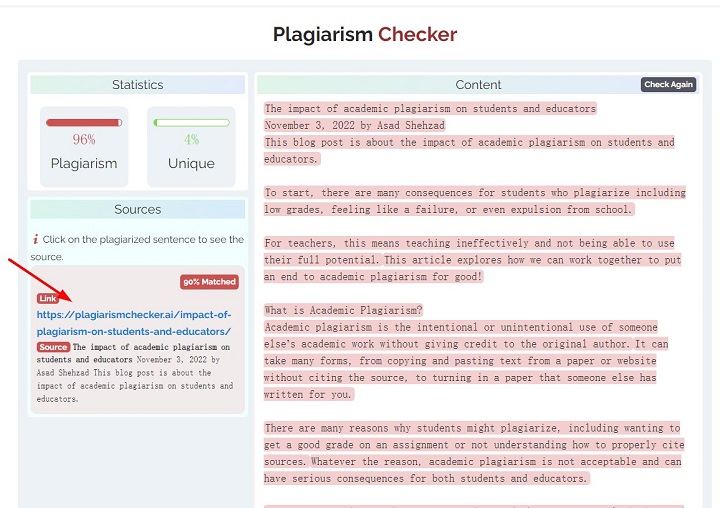5 Expert Tips to Protect Your Academic Work from Plagiarism
Plagiarism means using someone else’s work without giving them proper credit. In academic writing, plagiarizing involves using words, ideas, or information from a source without citing it correctly.
May 29, 2023

Entrepreneur I Writer

Plagiarism is a serious issue that every student and academic should be aware of. It refers to the act of using someone else's ideas, words, or work without proper attribution. In simpler terms, it's like taking credit for something you didn't create. Protecting your academic work from plagiarism is crucial for several reasons.
First, plagiarism undermines the integrity of the academic community. It erodes trust and devalues the hard work and originality that researchers and scholars contribute to their fields.
Followingly, plagiarism prevents you from fully exploring ideas and hinders your intellectual growth. When you engage in original research and produce authentic work, you deepen your understanding of the subject matter and develop critical thinking skills. In addition, academic institutions have strict policies against plagiarism, and the penalties can range from receiving a failing grade on an assignment to expulsion from the institution.
In the following sections, we will explore expert tips to protect your academic work from plagiarism. By implementing these strategies, you can ensure the originality, credibility, and ethical integrity of your scholarly contributions. To know more about such content guideline tools, you can visit CoachingSelect.
Let's delve into the practical steps you can take to safeguard your academic work from plagiarism.
Effective Tips To Avoid Plagiarism in Academic Work
1. Develop Strong Research and Note-Taking Skills
When conducting research, it's important to have a systematic approach. Start by clearly defining your research question or topic. Then, use reliable sources such as academic journals, books, and reputable websites. Take advantage of advanced search techniques, such as using specific keywords to refine your search results.
While conducting research, develop a note-taking system that works for you. It's crucial to record key information from your sources accurately and efficiently.
Use concise and clear sentences to summarize important points, including the author's name, publication year, and page numbers. Ensure that you distinguish your notes from direct quotations by using quotation marks or a separate section for verbatim text.
2. Use Proper Citation and Referencing Techniques
Citing your sources not only gives credit to the original authors but also allows readers to verify and locate the information you used. Proper citation demonstrates academic integrity and strengthens the credibility of your work. Ensure that you provide accurate and complete information for each source, including the author's name, title, publication date, and publication details.
Familiarize yourself with the citation style preferred by your institution or discipline. Different citation styles have specific formatting rules for in-text citations, reference lists, and bibliography pages.
Use reliable resources, such as style guides or online citation generators, to ensure accurate and consistent citation formatting. When citing sources, pay attention to details like punctuation, italics, and indentation, as these elements can vary depending on the citation style.
Double-check your citations to ensure accuracy, and review the specific rules for citing different types of sources, such as books, journal articles, websites, and interviews.
Example:
Here's a simple example to illustrate the importance of proper citation and referencing:
Let's say you're writing a research paper on the effects of exercise on mental health. You come across a study conducted by Johnson and Smith in 2018 that provides valuable insights into this topic. Without proper citation, your reader won't be able to locate the original study or verify the information you present.
Using the APA citation style, you would cite this source in your paper as follows:
In-text citation: According to a study by Johnson and Smith (2018), regular exercise has a positive impact on mental well-being.
Reference list entry:
Johnson, A., & Smith, B. (2018). The effects of exercise on mental health. Journal of Physical Activity and Mental Well-being, 10(2), 123-145.
3. Practice Proper Paraphrasing Techniques
Paraphrasing is an essential skill for avoiding plagiarism while effectively incorporating ideas from other sources. Paraphrasing involves restating someone else's ideas in your own words without changing the main points of a source. This technique demonstrates your understanding of the material and showcases your unique analysis.
Instead of directly copying a paragraph from a research article, you would rephrase the information using your own language and sentence structure, while retaining the original meaning. You can also use the paraphrasing tool to get this job done quickly.
Example:
If an original sentence states, "Recent brain imaging studies provide some clues on mechanisms underlying the most common cause of disrupted sleep (insomnia)." You could paraphrase it as, "The most prevalent cause of disturbed sleep, insomnia, may have some mechanisms that are the subject of recent brain imaging studies.."

4. Check Your Work for Originality Before Final Submission
Checking your work for originality means making sure that it is plagiarism free and maintaining the integrity of your writing. Review each section of your writing to confirm that your ideas are your own and properly developed. Pay attention to areas where you have summarized, paraphrased, or quoted external sources.
To support your efforts in checking for originality, consider using the plagiarism checker.
Simply put the text into the tool and click “check plagiarism” and the tool will compare your work against a vast database of sources to identify potential similarities and matches.

They highlight any similarities found, allowing you to review and revise your work accordingly.

Examine each flagged instance of similarity and determine whether it requires proper citation or further rewriting.
5. Stick to the Academic Integrity Policies and Guidelines
Academic institutions have specific policies and guidelines regarding plagiarism and academic integrity. Familiarize yourself with these rules to ensure you meet the requirements and expectations set by your institution. Be aware of the consequences of academic misconduct and the support services available to help you navigate these issues.
Review your institution's student handbook, course syllabi, or online resources to understand the specific policies and procedures related to plagiarism and academic integrity.
Additionally, your institution's guidelines may outline when and how to use direct quotations, how to attribute ideas to their original authors, and when collaboration is permissible or restricted.
Final Lines
By implementing these expert tips, you can protect your academic work from plagiarism, maintain your integrity, and contribute to the academic community with confidence. Remember, originality, responsible research practices, and proper attribution are the foundations of academic excellence.

